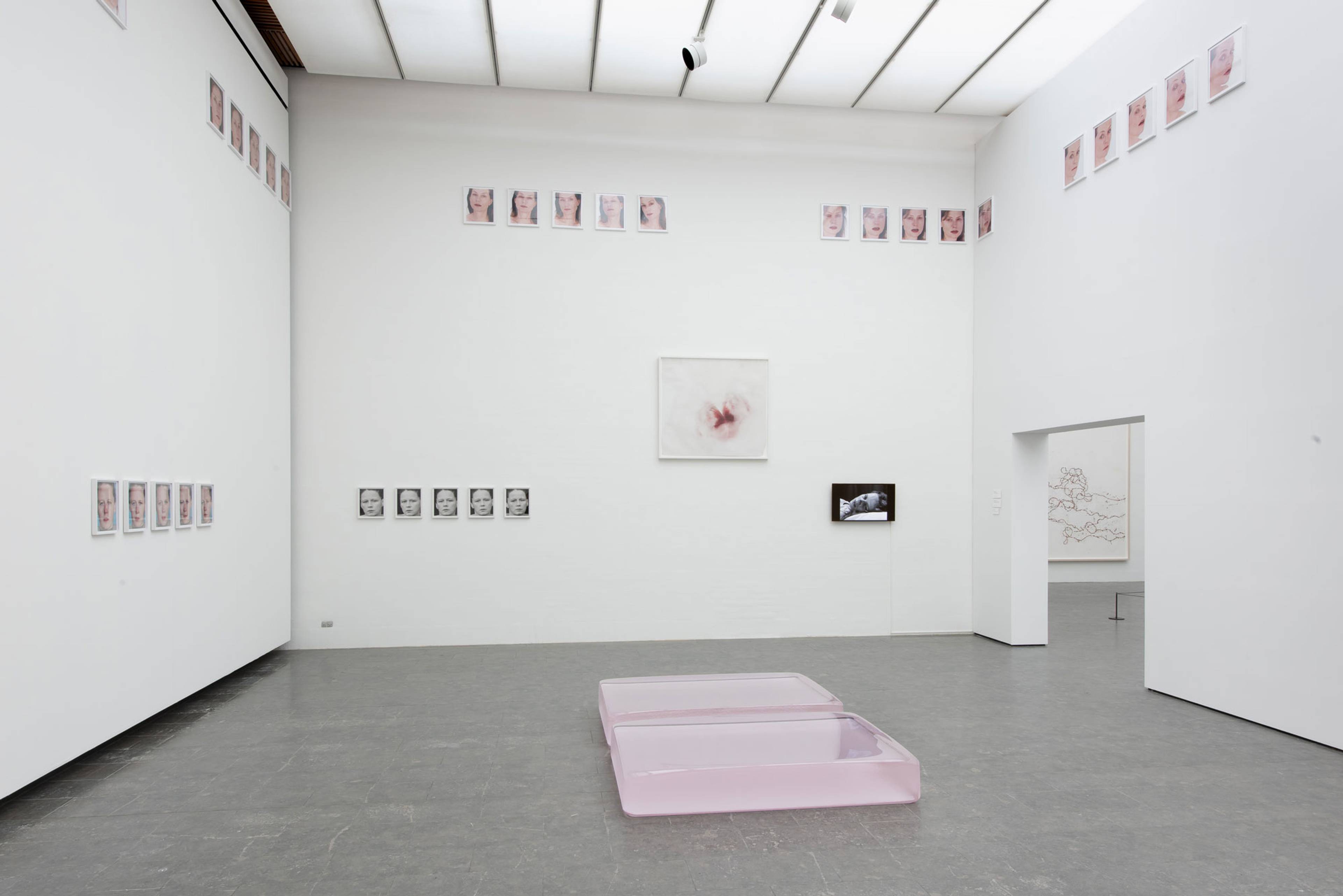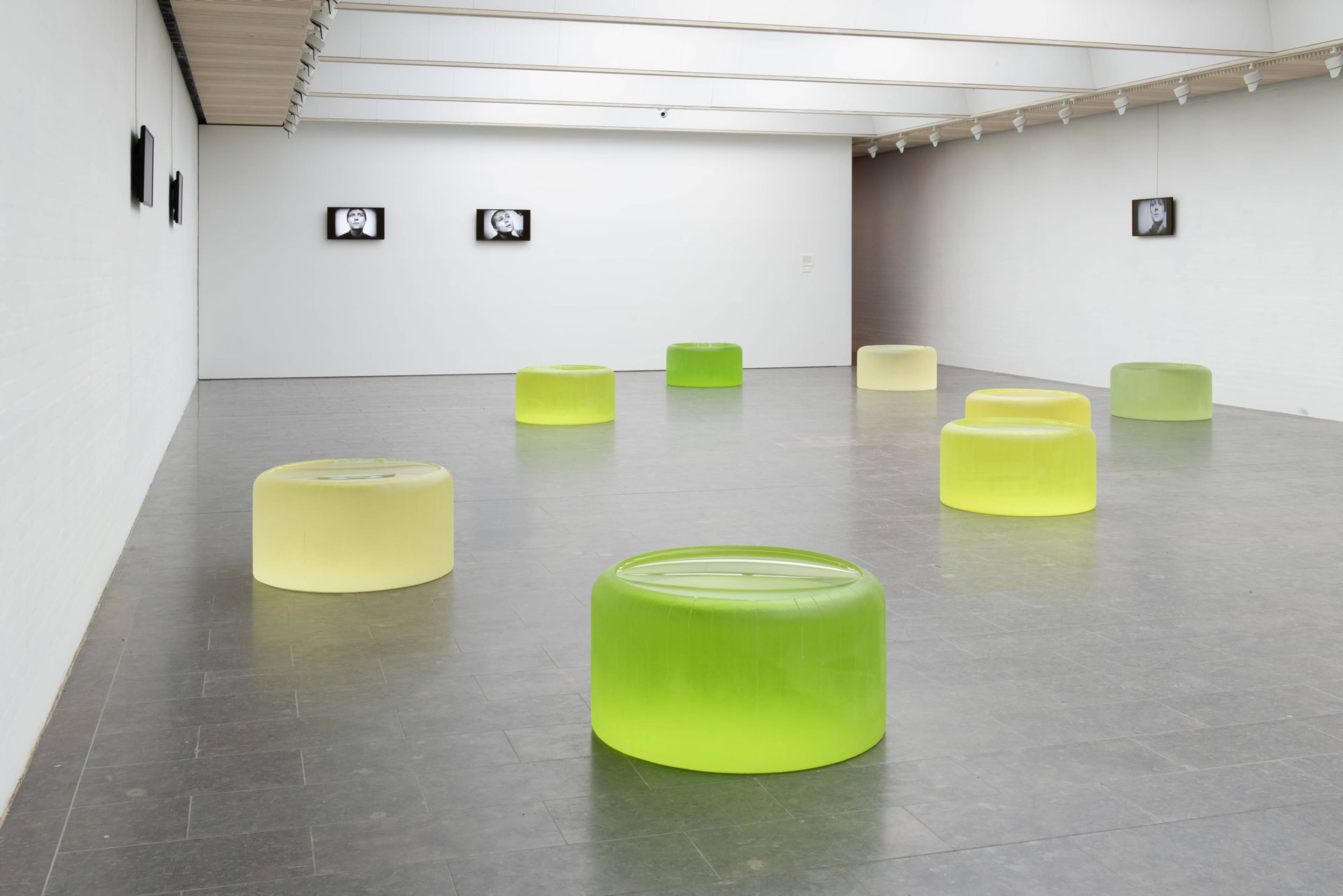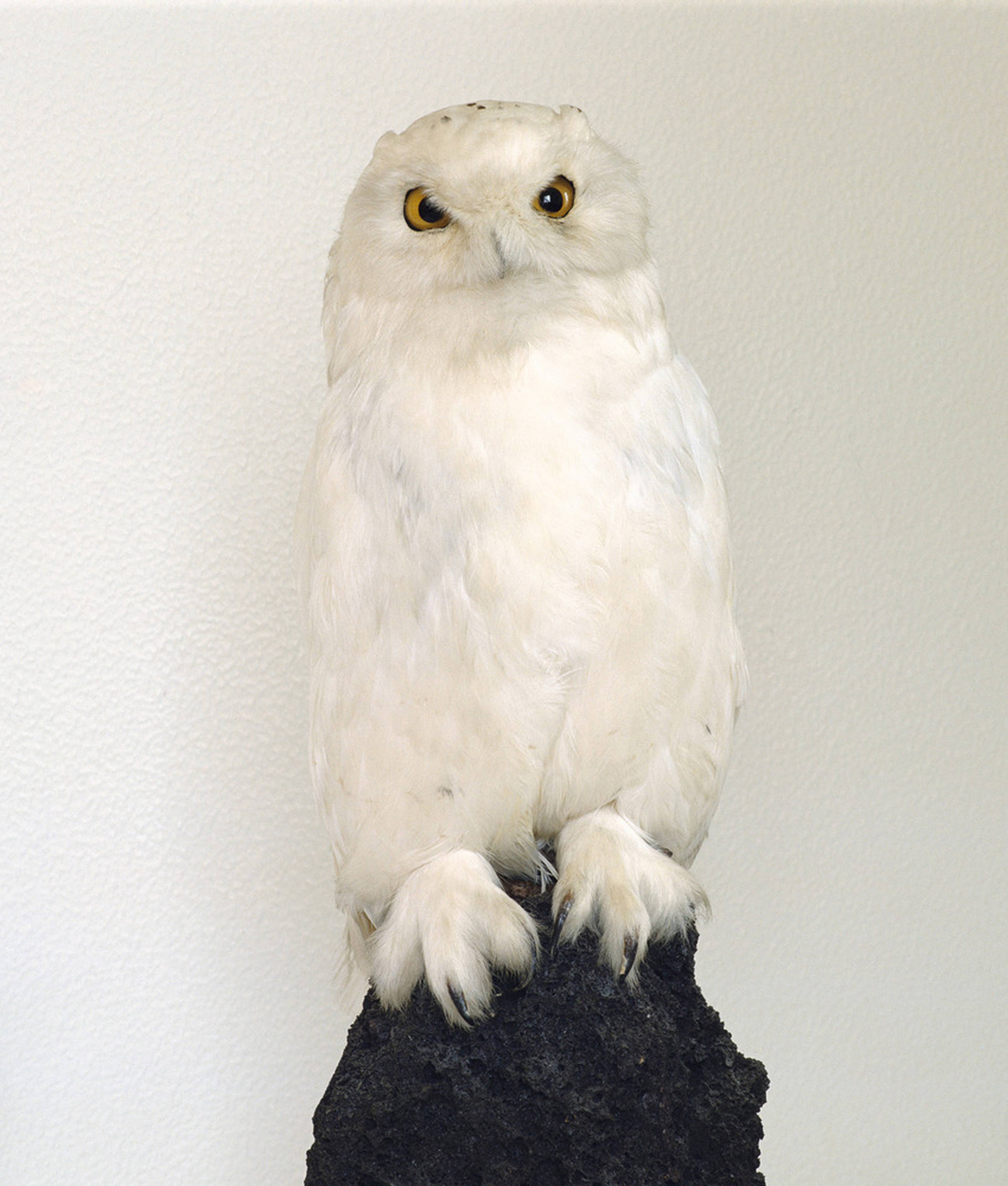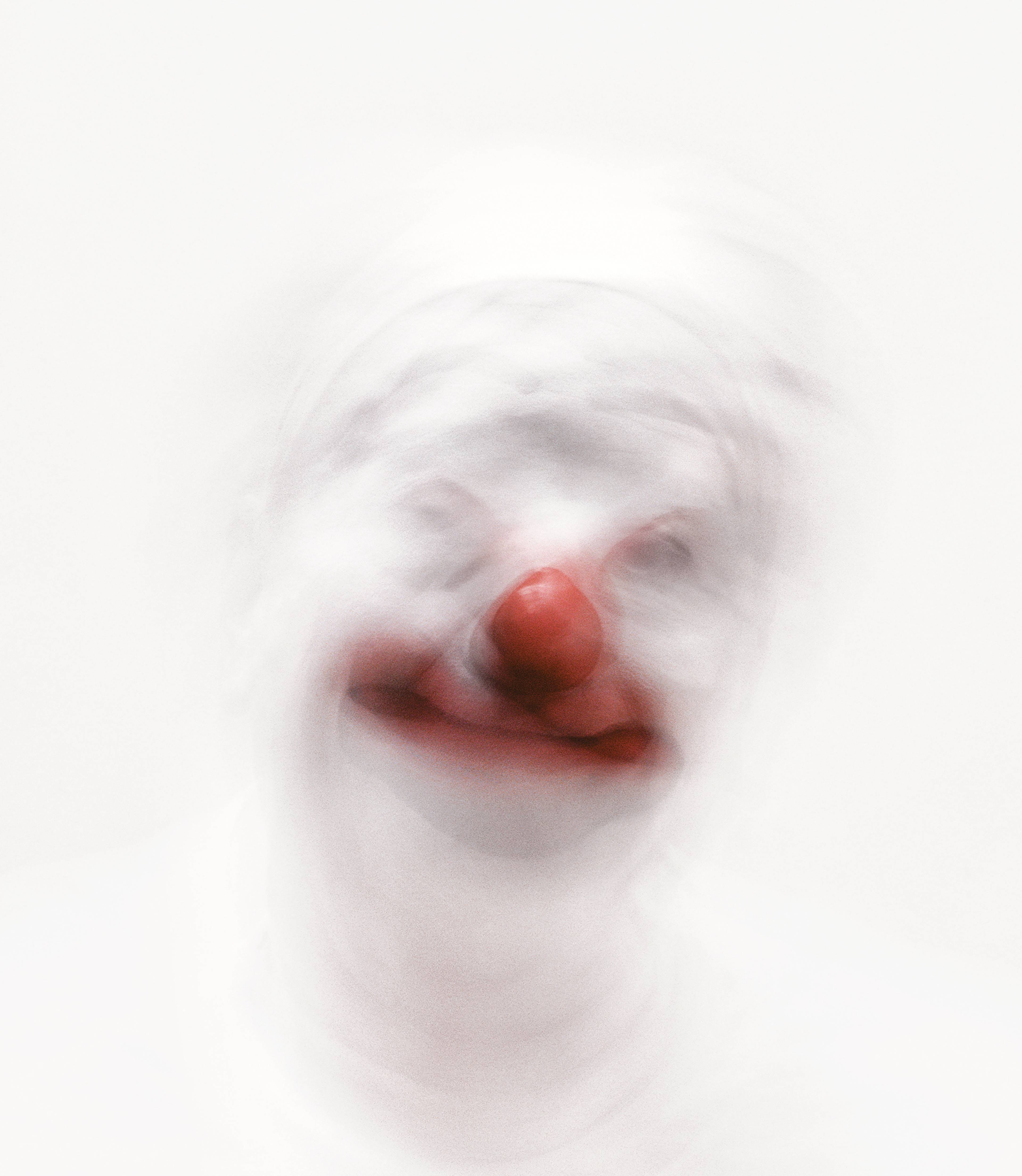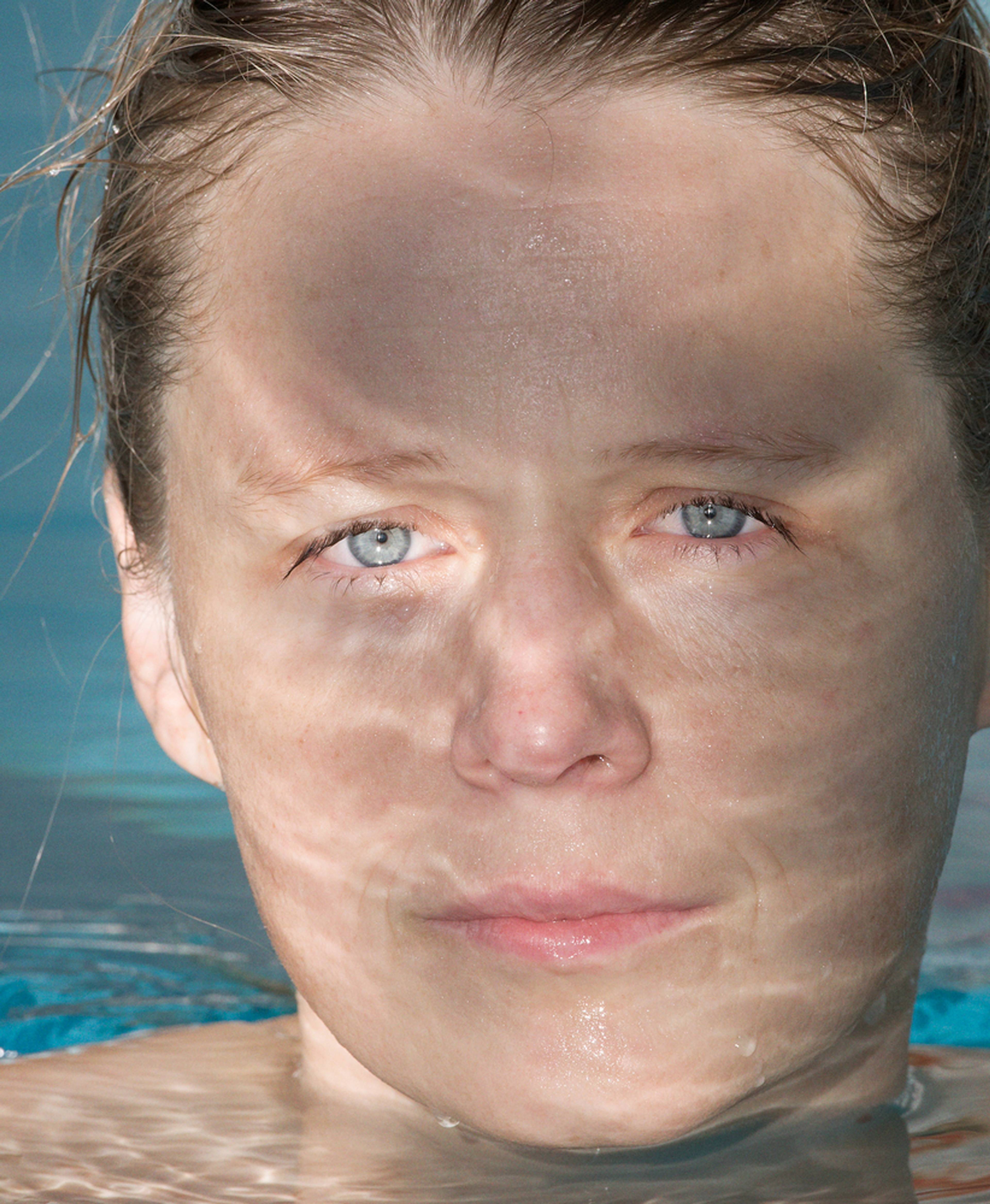First, there are only squares in sight: classy gray tile, a wall of white brick, image frames. Eventually, some rounded corners, before cylindrical shapes and a calmly majestic orb soften the abundance of straight lines. But a sense of rigidity prevails. Steel, glass, aluminum, bronze, intensely defined shapes, everything massive: consistency, Roni Horn’s (*1955) determined exclamation point as a grown-up formalist, visible from the outset. “THE DETOUR OF IDENTITY” in large, serifless letters adorns the white bricks, and convincingly so: Isn’t identity, at least in 2024, supposed to be fluid and loud, a ferocious outfit that stands or stands one out? Don’t all these right angles oppose fluidity and noise? Aren’t detours just avoidances?
This is not to say that neither Horn nor her art comes off as unambiguous – on the contrary, both appear like enigma, and somehow profoundly reserved. To Horn, it seems, art is not a question of being, but of doing. Having identity (queer, lesbian, female, androgynous) clung to her art for decades like burrs by audiences, critics, and institutions, this extensive presentation in Copenhagen looks like an elevated rejection of identifying as anyone whatsoever.
The show opens with a string of collage works. It’s a confident move in a retrospective-y solo, displaying scraps of imagery and notes wry, idiosyncratic, and occasionally poetic. As great as it is to trawl through the content of these quite elegant assemblages, it doesn’t feel wrong to assume that they are not among Horn’s key pieces. Those appear as the show widens out from its introductory corridor: incomprehensibly brutal yet gentle looking blocks of glass, rows of self-portraits, bird portraits, clown portraits, water portraits, her series of solid aluminum beams covered with sentences, leaning against the wall like three-dimensional headlines.
In other words: For a four-decade survey, the variation in motif(s) is impressively limited. Grayish waves, Horn’s face, owl, clown, Isabelle Huppert’s face. And a few others, obviously, but the levels of seriality border on repetition, which lies near to persistence, itself neither dull nor uninspired. Rather, it looks like focus and conceptualized penchants for portraiture, geometry, liquids, when squares of turbid Thames, backs of heads, cast one-liners, and the immense glass ponds, basins, cubes are scattered through the bright galleries, a silent score with silent lyrics.
Roni Horn, Dead Owl, 1997 (detail). © Roni Horn. Courtesy: the artist and Hauser & Wirth. Photo: Bill Jacobson
Roni Horn, Cabinet of, 2001–02 (detail), 36 c-printed photographs. Courtesy: the artist and Hauser & Wirth
Roni Horn, Untitled (Weather), 2010–11 (detail). © Roni Horn. Courtesy: the artist and Hauser & Wirth. Photo: Alex Delfanne
Throughout, works and spaces are interspersed with doses of arthouse classics, which work as mediation tools as much as thematic and aesthetic contexts. Psycho (1960), Red Desert (1964), Don’t Look Now (1973) In A Year of 13 Moons (1978), Melancholia (2011), inter alia loop in short, muted scenes, each on their own little 2010ish flatscreen. To be free from the notorious wall texts that contaminate every single Danish art museum is a blessing so rare and monumental as to almost excuse the selection’s slightly pretentious, film-school-starter-pack vibe (needless to say, all the films are by white canon males).
Still, these films are canonized for reasons, and it is also quite lovely to be in the company of a pair of dawn-pink glass pools laying heavy on the floor like a crush, numerous portraits of Isabelle Huppert, more portraits still of a beachy-eyed woman damp with desire, the lot tied subtly round with a bow by the tense, girl-on-girl relation between Bibi Andersson and Liv Ullmann in Persona (1966). Or to be surrounded by thirty Roni Horns, pictures through the years from her family’s archive of the artist as a multitude of people, accompanied by snippets from Rainer Werner Fassbinder’s iconic portrait of the trans woman Elvira Weishaupt. Or, to move around between the largest of the glass series, ten acid or beech-leaf or candy-green pieces, their glossy surfaces like birdbath-sized chunks of congealed water – and gazing down at them and at us are many faces of Joan of Arc in Carl Theodor Dreyer’s 1928 film, this legendary close-up where her crying eyes are their own ponds. So much said, without anyone uttering a word.
Still from Carl Theodor Dryer, La passion de Jeanne d'Arc (The Passion of Joan of Arc), 1928, 81 min. Courtesy: Criterion and Janus Films, New York
After this wet gaze, you reach an actual ocean, the exhibition ending in Louisiana Museum’s most exquisite space, serving 180 uninterrupted degrees of gorgeous ocean panorama. Where else could this detour arrive than by the water, a figure and a mood so central to Horn’s work. Perhaps water is indeed the most obvious representation of identity (by someone who rejects its contemporary worship): so crucially human yet way too common and shared to be particularized. In an era where unhinged fetishization of “identity” has fueled so many aspects of contemporary cultural discourse into outright political warfare, Roni Horn’s work is a rare and timely separation of identity from privacy, a distinction between expressive social coding and exceptionality. The artworks are really there, heavy and repetitive, but the artist is absent. The only thing I want from the audience, Roni Horn says, is time and gaze.
___
Roni Horn
Louisiana Museum of Modern Art, Copenhagen
2 May – 1 Sep 2024



